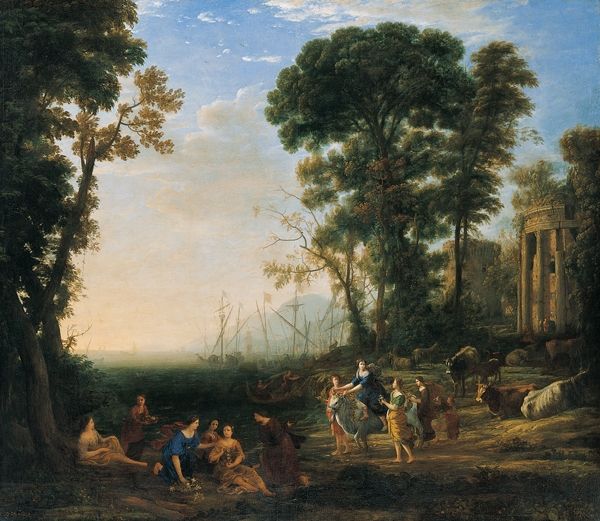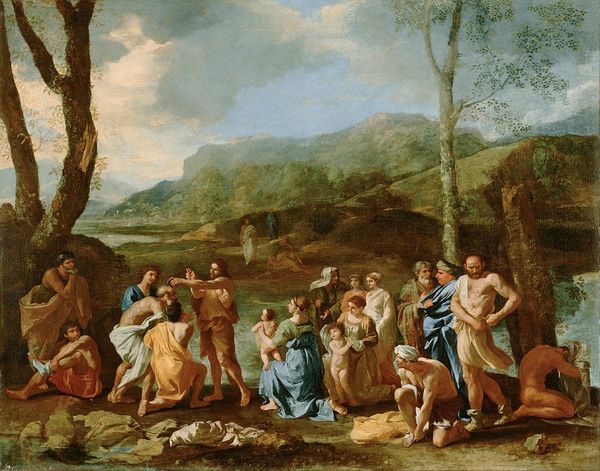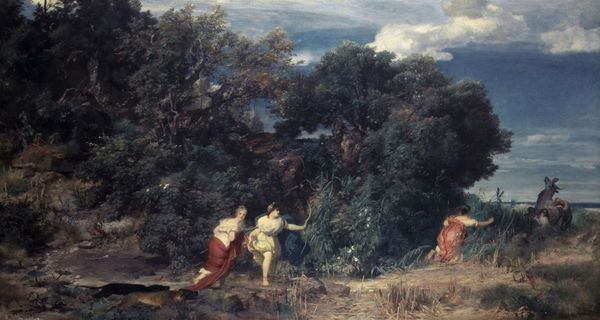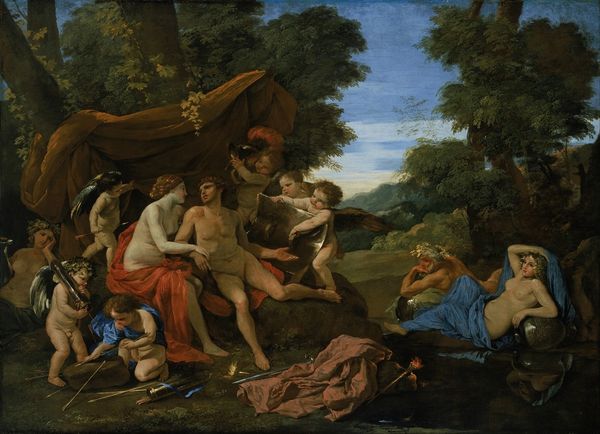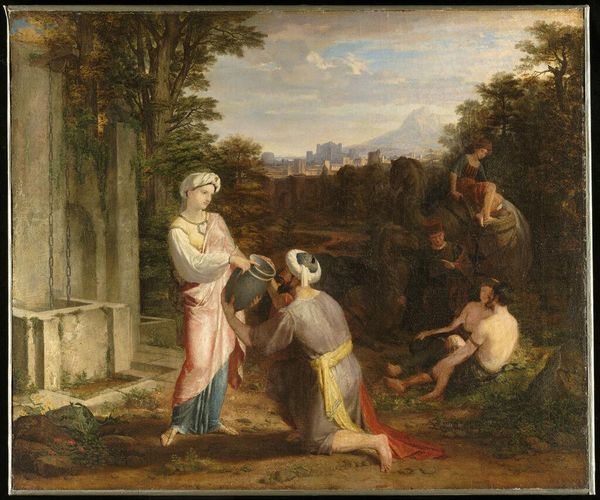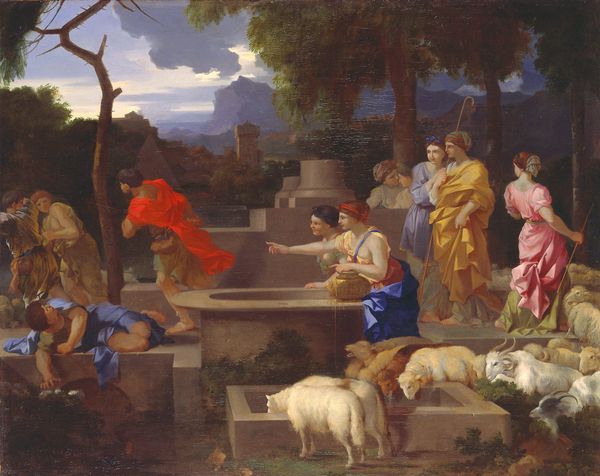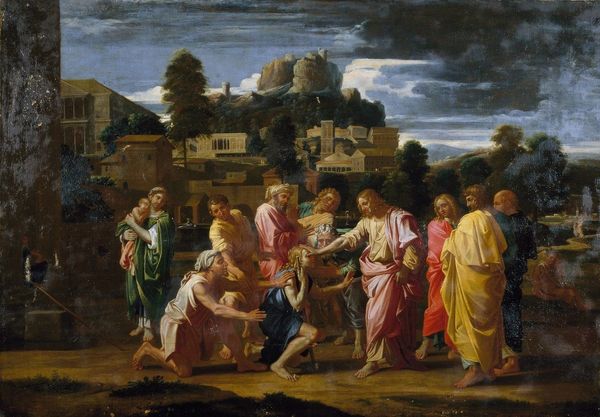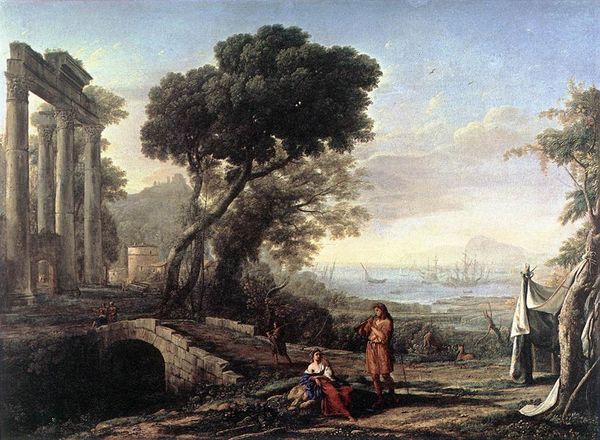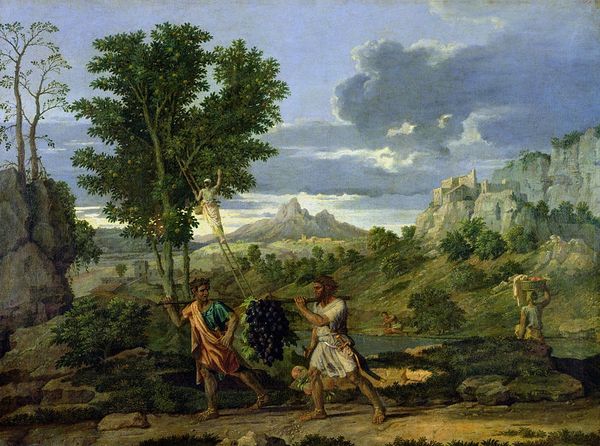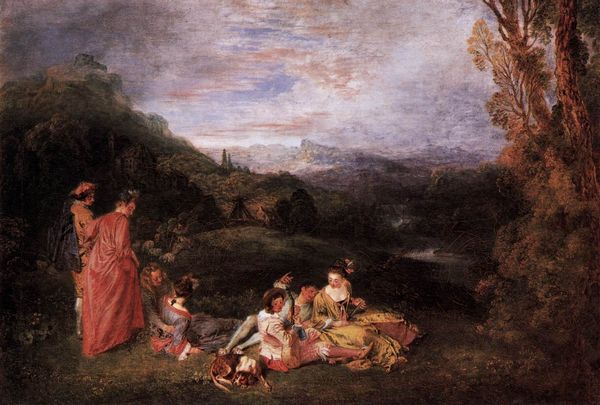
painting, oil-paint
#
narrative-art
#
baroque
#
painting
#
oil-paint
#
landscape
#
figuration
#
christianity
#
cityscape
#
history-painting
#
academic-art
Dimensions: 105 x 204 cm
Copyright: Public domain
Curator: Here we have Nicolas Poussin's "The Exposure of Moses," painted around 1650. Poussin, working in the Baroque style, uses oil on canvas to depict a scene rich in historical and religious significance. Editor: Immediately, I’m struck by the duality – the figures presented almost as classical statuary against a rather lush, living landscape. It has a kind of staged yet dynamic feel. Curator: That interplay is central to Poussin's process. Notice how the arrangement of the figures directs your gaze through the landscape. It’s a manufactured ideal, pulling inspiration from his study of Roman antiquity. He meticulously planned compositions that speak to specific philosophical concepts and narratives. Consider his use of the oil paint. Applied with restraint, and careful consideration to reflect classical idealism and material limitations of oil-based pigments. Editor: True. And speaking of narrative, let's consider this moment. We see Moses, destined for liberation and leadership, ironically beginning life completely exposed, at the mercy of a socio-political structure actively seeking to oppress him and his community. I wonder how 17th century viewers, with their own complex relationships to religious and political power, engaged with that tension. Curator: The social commentary is definitely present, and a close inspection of his material engagement emphasizes such reading, doesn't it? Poussin’s engagement with landscape is really striking: he studied the Roman Campagna extensively, incorporating those natural materials in his composition. And yet he elevates it, transforming the very earth, rocks, and plants, through technique and application, into a setting worthy of biblical narrative. Editor: He's not simply illustrating a story; he’s layering social meanings and challenging perceptions around faith, power, and deliverance in light of his political and historical milieu. In fact, what's happening around the central figure is worth paying attention to: each secondary actor has a role in this history and offers a view onto social structures in place at the time. Curator: Precisely! This detailed examination demonstrates the level of investment, both materially and intellectually, into creating meaning within the painting. Editor: Indeed. Viewing it now, through contemporary eyes, allows for a reconsideration of narratives around refuge, systemic power, and the ongoing struggle for visibility and self-determination across intersecting identities. Curator: Ultimately, Poussin's “The Exposure of Moses” offers a fascinating insight into 17th-century artistic production, carefully considering labor, materials and application. Editor: It makes you wonder what will come from the current landscape of artists also engaging materials and modes of working in today's politically urgent and increasingly tumultuous art world.
Comments
No comments
Be the first to comment and join the conversation on the ultimate creative platform.


